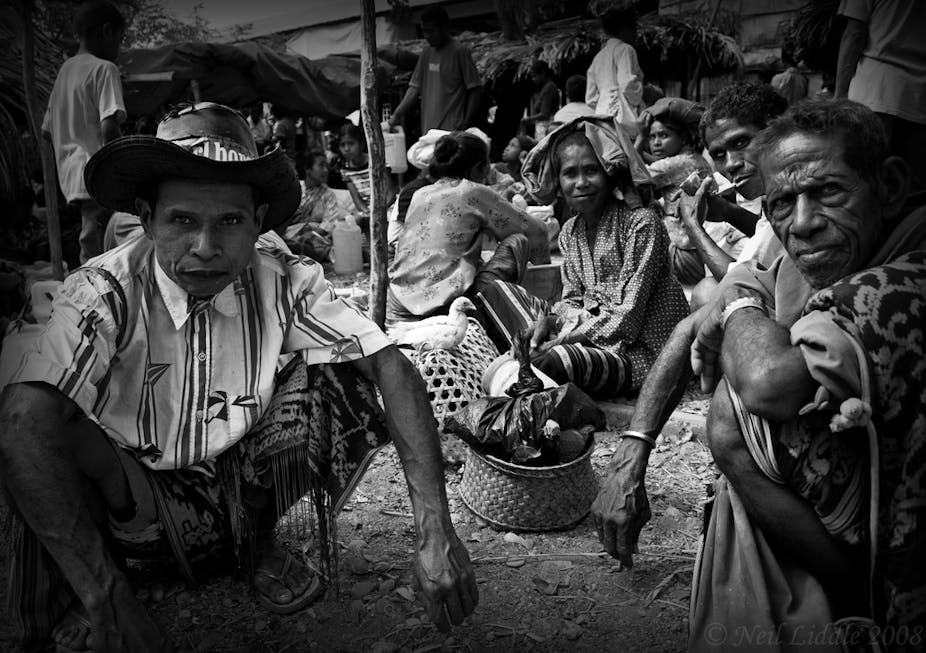A nation that destroys its soils, destroys itself — Franklin Roosevelt
It is a worthy objective to sell more food to Asia, but we should not conflate pursuing export income with improving regional food security.
The poorest, hungriest people in our neighbouring countries cannot afford to buy Australian products at prices that would generate a profit for Australian farmers and everyone else along the supply chain.
We need to help our neighbours to feed themselves.
The flight from Darwin to Dili takes about the same time as that from Sydney to Melbourne. However, few Australians know that around 40% of the Timorese population is malnourished. The infant mortality rate is high and many areas in Timor Leste experience annual “hungry seasons”, when the amount of food harvested cannot feed the local population.
This is a country that should easily be able to feed itself, and even export food crops to the rest of the world, but is in fact a huge net food importer.
Crop production is influenced by many factors.
In the case of Timor Leste, one of the main causes of seasonal food shortages is the lack of irrigated agriculture. This is due to poor infrastructure, and the fact that the rivers and existing irrigation weirs and canals are affected by high erosion rates.

Soil loss varies across the country. But the Caraulun catchment, for example, loses an average of around 30 tonnes of soil per hectare each year.
Whilst Timor Leste receives up to three metres of rain per year at higher altitudes, it falls mostly in short, heavy downpours during the monsoonal wet seasons. Due to its steep topography, erodible soils, overgrazing by livestock, inappropriate fire regimes and the over-clearing of forests for fuel wood, rainfall runs quickly down-slope, often taking soil with it.
As a result, soil loss from land slides is significant, and river banks are often unstable.
High erosion rates fill rivers and weirs with sediment, which consequently increases the severity of flooding. This leads to annual losses of human lives, livestock, infrastructure and fertile farmland, including the rice paddies on the river flats.
According to local farmers, the lack of irrigation is the biggest barrier to their food production.
To help out, the government plans to rehabilitate several weirs across the country at great expense. But, unless the erosion-sedimentation problem is tackled effectively, any improvement will be at best temporary and valuable funds will be wasted when the weirs are destroyed again by the floods.
As with catchment management in Australia, it is crucial to tackle the root causes of land degradation and not just the symptoms.

Our research in Timor Leste suggests that long-term solutions to its food security challenges are most likely to emerge from a combination of factors: improved watershed management (such as halting deforestation, improving fire regimes, managing total grazing pressure and strategic revegetation), improved farming systems (such as productive and resilient crops in arable areas, and tree crops and agroforestry systems in erosion-prone areas), as well as better infrastructure for water management and irrigation.
The latter solution is not just about big concrete structures, like weirs or large irrigation channels. It can also be as simple as having a plastic tank at the top of a hill, filled with poly pipes from a solar pump at the bottom of the hill, in order to service simple gravity-fed drip irrigation systems for orchards and food gardens.
Such basic technology — familiar to all Australian farmers and most rural landholders — would make a massive difference in districts where many children do not attend school during droughts because they have to stay home to carry water by hand to keep subsistence food crops alive.
These measures are relatively straightforward technically.
But, implementing them at a catchment scale would require high levels of community engagement, hands-on farmer training and possibly, strategic targeting of incentives to encourage more sustainable land use and management.
These, in turn, would need to be underpinned by catchment strategies informed by good science, and substantial improvements in governance at local, regional and national levels.
Australia has tremendous expertise and experience with community Landcare, landscape governance, integrated catchment management, regional natural resource management, farmer field schools, crop-focused programs like Seeds of Life, tree crops and agroforestry systems.
These could be scaled up as part of a regional program.
Grassroots initiatives that make a real difference for the necessities of life, like water and food, need to be part of the mix for Australian aid and regional investment.

